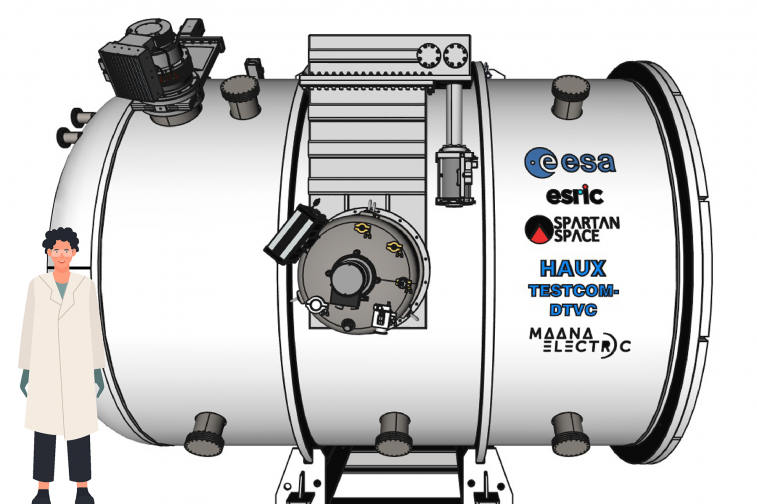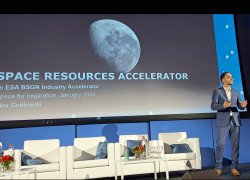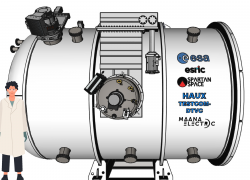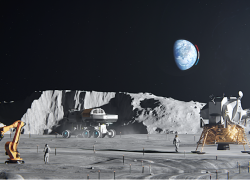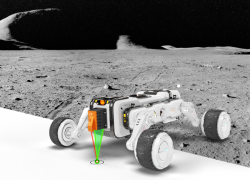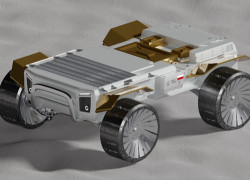The Dusty Thermal Vacuum Chamber (DTVC), soon to be implemented in Luxembourg, will be a gateway to the Lunar surface
On 13 June 2023 at ESTEC, Netherlands, the European Space Agency (ESA) conducted the kick-off meeting with Spartan Space, Haux Life Support, Maana Electric, and the European Space Resources Innovation Centre (ESRIC) - part of the Luxembourg Institute of Science and Technology (LIST) - to design and manufacture a novel Dusty Thermal Vacuum Chamber (DTVC). The DTVC will be capable of testing subsystem components under lunar surface conditions of high vacuum (10-6mbar), extreme temperatures (-180 to 160oC) and in the presence of Lunar dust (regolith) simulant.
The DTVC will be commissioned at the ESRIC/LIST premises in Luxembourg and is aimed to be ready in 2025.
Context
The presence of lunar dust poses significant challenges to lunar missions, affecting the integrity of equipment and instruments. Astronauts have reported various issues such as failing seals, impaired vision, and damage to solar panels due to dust accumulation. These problems can lead to malfunctions or even mission failure. Furthermore, lunar dust hampers the accurate collection of data by interfering with scientific instruments, resulting in incomplete or inaccurate data. To address these challenges, scientists and engineers have developed innovative solutions such as dust-resistant coatings and protective covers. As we plan for future lunar missions, it is crucial to continue advancing technologies and strategies to mitigate the impact of lunar dust and ensure mission success.
The European Space Agency, in collaboration with international partners, is focused on future lunar missions involving both human and robotic activity. These missions aim to establish a sustainable presence in lunar orbit and on the surface. By recognising the Moon as a crucial testing ground for the future exploration of the solar system, the emphasis is being put on developing a more complex infrastructure, particularly around the lunar South Pole. Unlike the Apollo missions that targeted various locations, programmes like Artemis prioritise the South Pole, offering the advantage of reusing equipment for multiple missions. Europe can contribute with logistical elements, such as the Argonaut and various robotic mission can facilitate the supply chain between a lander and a crew. Additionally, the integration of Lunar Charging Stations (LCS) equipped with scientific instruments or a Secondary Habitat to extend surface operations are possible.
It is important to note that the involvement in lunar missions is not limited to space agencies; commercial actors are now playing a significant role in lunar exploration activities, including in Europe.
“The Dusty Thermal Vacuum Chamber (DTVC) that will be implemented in Luxembourg will be a gateway to the lunar surface: critical equipment will be tested in high vacuum in presence of lunar dust (regolith). With its dimensions and vacuum capacities it will be unique in Europe and will allow testing equipment before embarking to a lunar mission” states Peter Weiss, CEO of Spartan Space. “ We are particularly happy to have assembled a very strong consortium of experts in this field with Haux, Maana, and ESRIC/LIST”.
In the coming decades of lunar surface missions, the implementation of a DTVC will be a vital endeavour towards qualifying and accepting components crucial to the success of lunar missions. The DTVC’s mission is to prevent the occurrence of late discovery problems and mitigate risks during proto-flight and acceptance testing. By subjecting subsystems to simulated lunar surface conditions, the mission system owner can effectively reduce the mission's early failure rate to an acceptable level. This risk mitigation objective is particularly significant in addressing latent defects that may manifest in vacuum, temperature, and environmental stress conditions of space (e.g. dust). Testing in the DTVC enables the detection of defects that may have otherwise been overlooked or unanticipated, thereby ensuring the thorough qualification of mission components.
Communiqués liés
Launch of a new Space Resources business accelerator
The European Space Agency (ESA) mandates the European Space Resources Innovation...
The Dusty Thermal Vacuum Chamber (DTVC), soon to be implemen...
On 13 June 2023 at ESTEC, Netherlands, the European Space Agency (ESA) conducted...
Start-up Support Programme III
Less than two years ago, in 2021, we rolled out the initial call for the ESRIC S...
The ESRIC Start-up Support Programme (SSP) announces the sec...
The second round of the ESRIC Start-up Support Programme has officially conclude...
Un nouveau pas vers le développement d'une infrastructure l...
Astroport Space Technologies, dont le siège social se trouve à San Antonio, Te...
Il n'y a aucun résultat pour votre recherche

